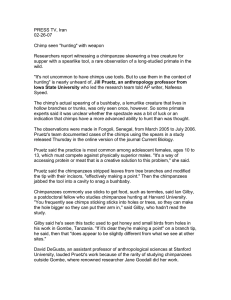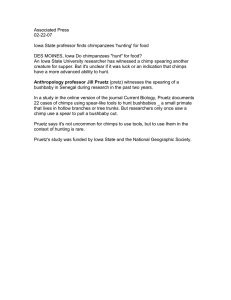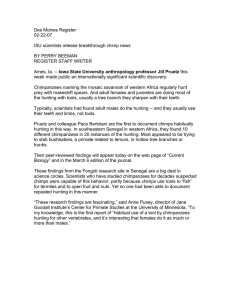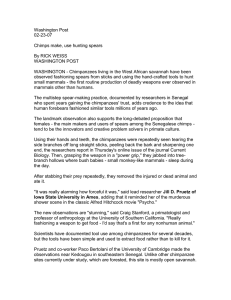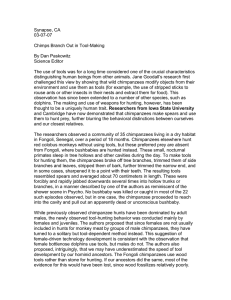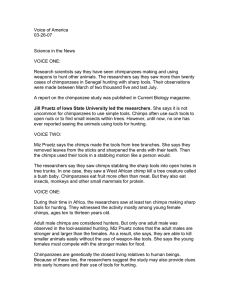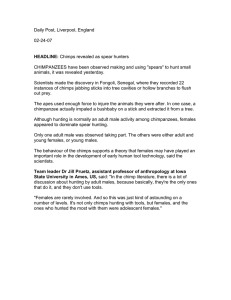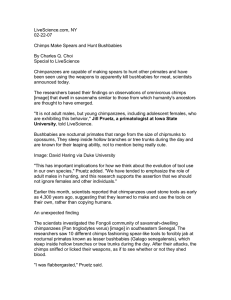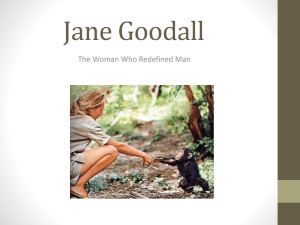Associated Press 02-23-07 Female Chimps Using Spears to Hunt
advertisement
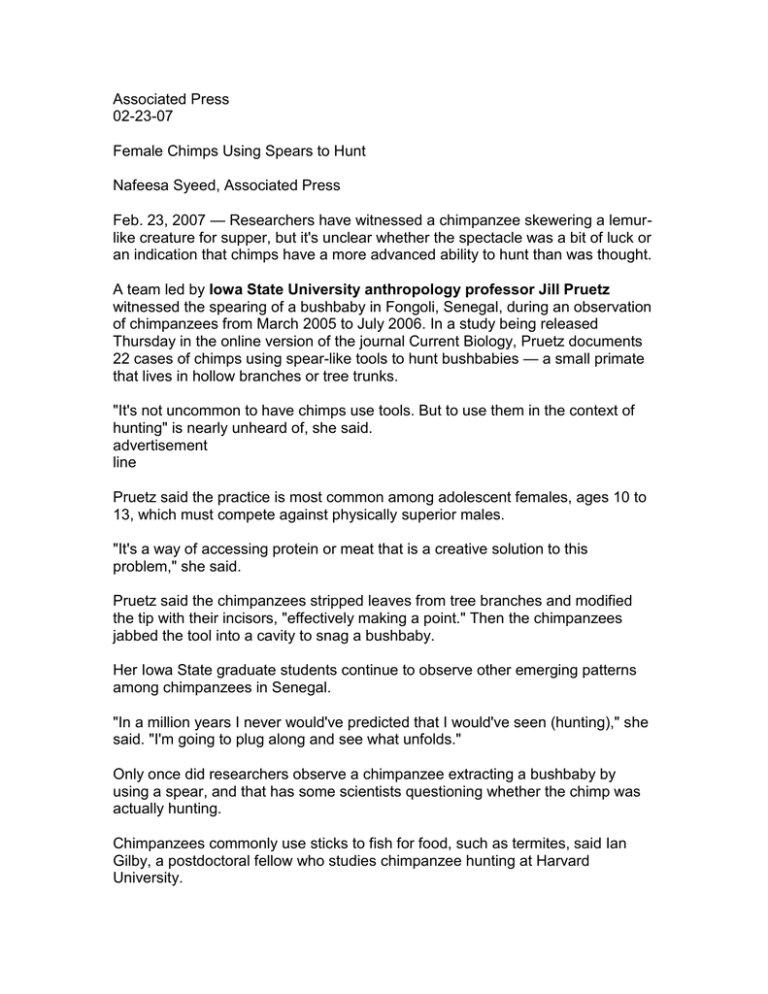
Associated Press 02-23-07 Female Chimps Using Spears to Hunt Nafeesa Syeed, Associated Press Feb. 23, 2007 — Researchers have witnessed a chimpanzee skewering a lemurlike creature for supper, but it's unclear whether the spectacle was a bit of luck or an indication that chimps have a more advanced ability to hunt than was thought. A team led by Iowa State University anthropology professor Jill Pruetz witnessed the spearing of a bushbaby in Fongoli, Senegal, during an observation of chimpanzees from March 2005 to July 2006. In a study being released Thursday in the online version of the journal Current Biology, Pruetz documents 22 cases of chimps using spear-like tools to hunt bushbabies — a small primate that lives in hollow branches or tree trunks. "It's not uncommon to have chimps use tools. But to use them in the context of hunting" is nearly unheard of, she said. advertisement line Pruetz said the practice is most common among adolescent females, ages 10 to 13, which must compete against physically superior males. "It's a way of accessing protein or meat that is a creative solution to this problem," she said. Pruetz said the chimpanzees stripped leaves from tree branches and modified the tip with their incisors, "effectively making a point." Then the chimpanzees jabbed the tool into a cavity to snag a bushbaby. Her Iowa State graduate students continue to observe other emerging patterns among chimpanzees in Senegal. "In a million years I never would've predicted that I would've seen (hunting)," she said. "I'm going to plug along and see what unfolds." Only once did researchers observe a chimpanzee extracting a bushbaby by using a spear, and that has some scientists questioning whether the chimp was actually hunting. Chimpanzees commonly use sticks to fish for food, such as termites, said Ian Gilby, a postdoctoral fellow who studies chimpanzee hunting at Harvard University. "You frequently see chimps sticking sticks into holes or trees, so they can make the hole bigger so they can put their arm in," said Gilby, who hadn't read the study. advertisement line Gilby said he's seen this tactic used to get honey and small birds from holes in his work in Gombe, Tanzania. "If it's clear they're making a point" on a branch tip, he said, then that "does appear to be slightly different from what we see at other sites." David DeGusta, an assistant professor of anthropological sciences at Stanford University, lauded Pruetz's work because of the rarity of studying chimpanzees outside Gombe, where renowned researcher Jane Goodall did her work. It's hard to get animals accustomed to human presence and willing to carry on naturally, DeGusta said. "The more populations that are studied, the more we learn about how their behavior can vary," said DeGusta, who also hadn't read the study. Pruetz's study was funded by Iowa State University and the National Geographic Society.
